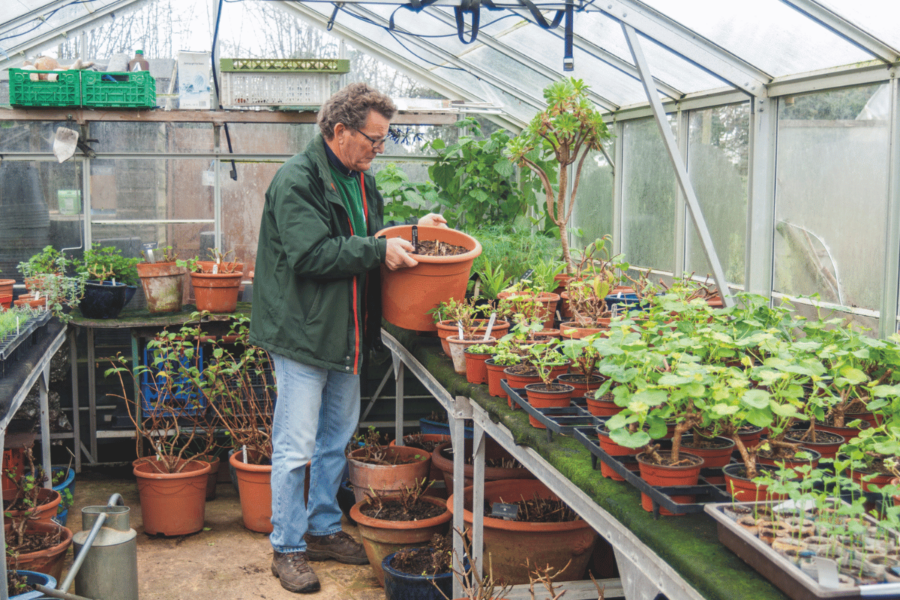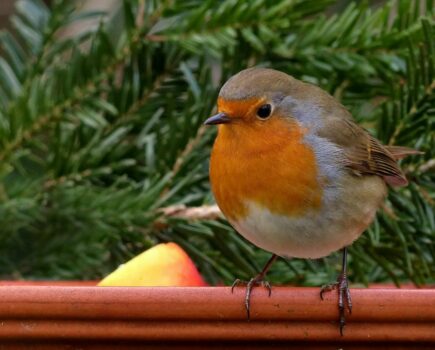
Gardening Guru and owner of Barnsdale Gardens, Nick Hamilton, shares his gardening checklist to get your outdoor space ready for March.
Words: Nick Hamilton. Images: Steve Hamilton.
The appearance of snowdrops shouldn’t fail to lift even the heaviest of hearts this winter. These are traditionally the first sign that spring is on its way and definitely our signal to get out into the garden to prepare it for the season to come. Here’s what to do in February, ready for March.
Divide winter aconites
These lovely late winter-flowering bulbous plants create a spectacular carpet during winter and are perfect for naturalising in woody or shady areas. Now they have finished flowering, this is the ideal time to thin out in congested areas and replant where needed. If you are starting afresh, then always buy them at this time “in the green” as planting dry bulbs can have very unpredictable results. Plant at the same depth as they had been growing.
Feed the birds
Hopefully, this is something you have been doing throughout winter, so keep it up. This is a critical month for birds, with a lot of the berries they usually feed on through winter having been eaten or rotted and the populations of insects not yet at the levels they require.
Don’t forget that if you provide food, you will also need to provide some water for drinking – this can be as simple as a saucer of water.
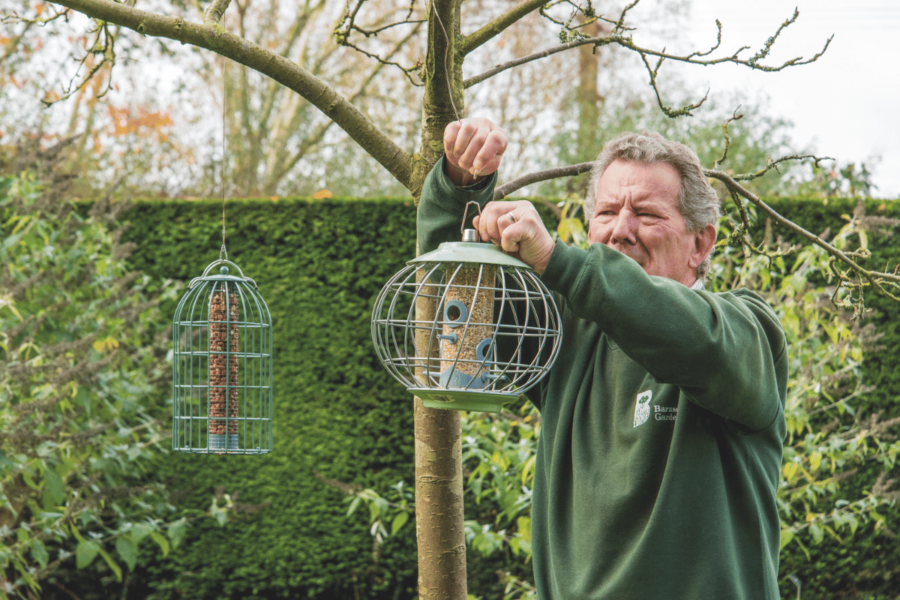
Bring dahlias into growth
As the sun starts to rise in the sky and the light intensity begins to increase this month, we need to bring out the dahlias, being stored under greenhouse benching, in a shed or garage, into a place where they get much more light to prevent the shoots becoming thin and elongated.
Also, by starting to add a bit more water too, this will encourage strong, healthy shoots to grow away. If you don’t have anywhere but a shed or garage to store them away from the frost, then you can move them out during the day and back inside if there is a frost forecast at night.
Force rhubarb
You don’t have to live in the Yorkshire Rhubarb Triangle to grow tasty, forced rhubarb. At Barnsdale, I have a beautiful Whichford Pottery forcer (below) which is placed over a clump of rhubarb now to eliminate the light. This makes the stems not only shoot up faster, but it also makes them sweeter.
In fact, you don’t need to invest in a posh forcer as you could use something as simple as an upturned bin, large pot or anything that will cover the clump, eliminate the light and leave room for the stems to grow. Once grown, pull the stems and re-cover to force again.
After the second forcing, leave them to grow away for the rest of the season uncovered and do not harvest from them again this year. I have three clumps and force just one of them each year, using the other two for my main crop of stems for eating.
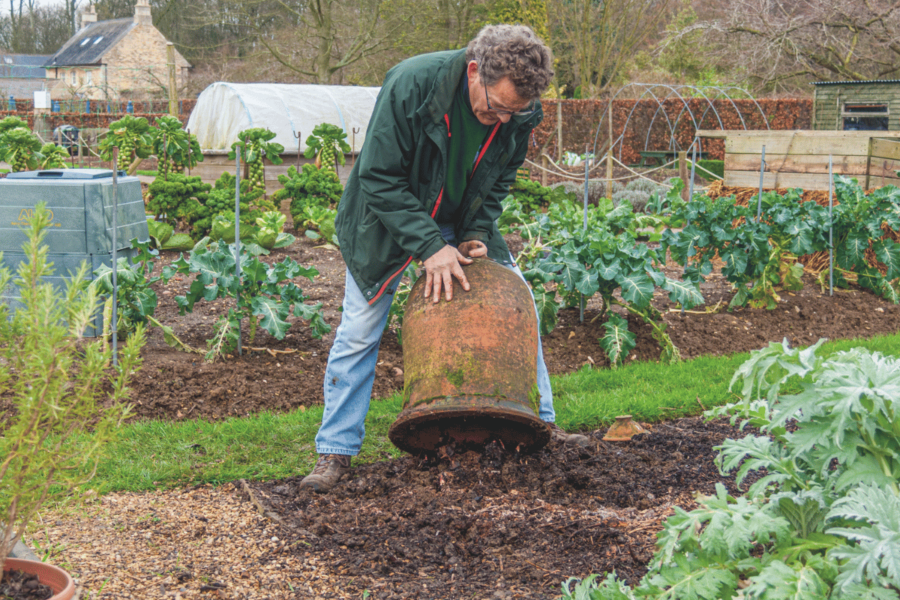
Prune clematis
This is the month to make sure the large-flowered varieties produce their display at the required height in the summer. Most varieties will put on around 1.8-2.4m (6-8ft) of growth annually, so we need to take this into account when cutting back their stems.
Always prune back to good, healthy buds and remove completely any weak stems. In most cases, I like mine to flower where I can see them, so most get cut back to around 20-22cm (8-9in) from the ground each year, but I don’t cut all the stems this low because by leaving some longer and cutting some back shorter gives me flowering up and down the stems, rather than just at one height.
Cut back hellebores
These evergreen perennials produce a magnificent late winter and spring display that can’t fail to impress. However, the leaves of Helleborus x hybridus varieties are very likely to be spotted and tatty by now, so I like to cut them back to ensure they do not detract from the beautiful flowers when they appear.
Generally, I wait until I can just see flower buds emerging and then I remove all the leaves to ground level, so that I always have something to look at. Later, as the flowers start to fade, new leaves emerge to replace those removed.
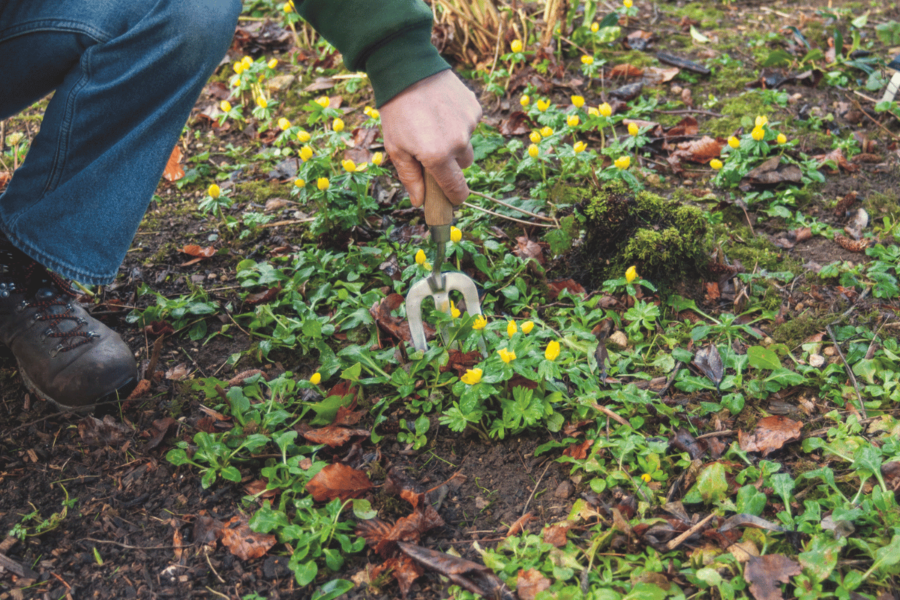
Plant Jerusalem artichokes
This is a fabulous perennial winter vegetable that can be left in the ground throughout winter and harvested when required. Many gardeners use it as a windbreak, due to the tall stems clothed with large, coarse, hairy leaves.
However, it is a vegetable that will spread, so I find it best to grow it in pots. I like to grow the variety ‘Fuseau’, but there is also a shorter variety called ‘Dwarf Sunray’.
I pop a couple of tubers in a 10-litre pot, and once the shoots reach around 30cm (12in), I sink the pots into the ground to create a windbreak hedge. When I need to harvest some tubers, I just lift the pot out of the ground and pull off the tubers.
Nick Hamilton is the owner of Barnsdale Gardens in Rutland, an eight-acre site featuring 38 individual gardens to explore, plus tea rooms, a nursery and lots more. For more information, visit barnsdalegardens.co.uk.
Read Nick’s Gardening Guru column in every issue of Platinum, or read his previous columns here!

